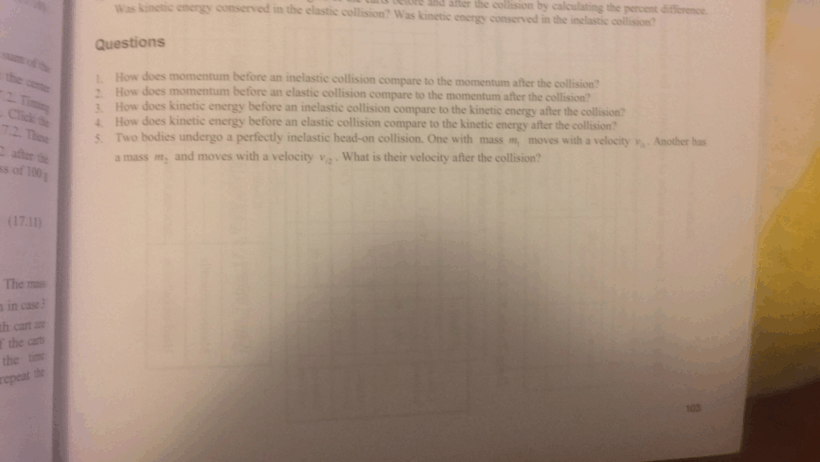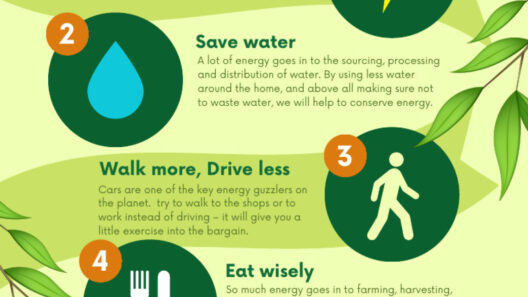The concept of energy conservation in collisions is pivotal to understanding not only the fundamentals of physics but also the implications it has in various real-world scenarios, from design engineering to environmental ethics. At the core, the principles governing collisions are categorized into two main types: elastic and inelastic collisions. Distinguishing between these categories reveals the intricacies of energy transformation and the underlying laws of physics, fundamentally shifting how we perceive motion and impact.
Firstly, it’s essential to define what a collision is. In physics, a collision occurs when two or more bodies exert forces on each other for a relatively short time. The energy involved in these interactions can manifest in various forms, including kinetic energy, thermal energy, and sometimes even sound energy. Understanding how these energies are conserved or transformed during a collision lays the groundwork for deeper exploration into elastic and inelastic scenarios.
Elastic collisions are characterized by the remarkable conservation of both kinetic energy and momentum. Imagine two billiard balls striking each other; after contact, they recoil in opposite directions while retaining their kinetic energy. The key feature here is that the total kinetic energy before the collision equals the total kinetic energy after. Mathematically, this can be expressed with the equation: K.E.initial = K.E.final. This principle of conservation not only applies in ideal conditions but is deeply rooted in the law of momentum conservation, whereby the total momentum before the collision equals the total momentum afterward.
However, the real world is rarely governed by ideal conditions. Inelastic collisions, on the other hand, present a stark contrast. In these scenarios, kinetic energy is not conserved. Instead, some energy dissipates as heat, sound, and even deformation of the colliding bodies. A classic illustration of inelastic collisions can be found in car crashes, where vehicles crumple and absorb energy upon impact. Here, the fundamental equation reflects that K.E.initial is greater than K.E.final, illustrating that energy has been transformed into forms that do not contribute to the total kinetic energy of the system.
The distinction between elastic and inelastic collisions often hinges upon the nature of the materials involved. Elastic materials can return to their original shape, allowing them to conserve kinetic energy efficiently. Conversely, inelastic materials, which deform permanently or absorb energy without rebounding, lead to energy loss. This transformation emphasizes the omnipresent laws of thermodynamics, wherein energy undergoes conversion rather than outright destruction.
Observing energy conservation in these interactions offers insightful perspectives into systems and behaviors that extend beyond the realm of physics. Consider the implications of these mechanical principles in the context of environmental conservation. As we consider energy loss and gain, we can correlate the principles of collision to our overarching fight against energy waste. Every collision, whether literal or metaphorical, serves as a reminder of the importance of energy efficiencies in our daily lives.
Equally intriguing is the role of restitution in collisions, which refers to the measure of how much kinetic energy remains post-collision, indicative of how ‘bouncy’ the objects involved are. This coefficient of restitution varies from 0 to 1, with 1 characterizing perfectly elastic collisions and 0 denoting a completely inelastic collision. Importantly, this coefficient not only directs the analysis of individual collisions but provides an overarching narrative about energy conservation trends in society. Curbing energy waste, akin to maximizing restitution, is integral to sustainability efforts, as they reverberate across ecosystems.
The repercussions of collisions extend further than mere mechanics. Consider how our understanding of these phenomena can morph our approaches to design and engineering. Engineers meticulously utilize the principles of elastic and inelastic collisions in developing technologies that can withstand impacts. Think of car safety mechanisms, sports equipment, and even buildings engineered to withstand earthquakes—each aspect takes into account the conservation of energy and momentum during collisions.
Moreover, in the realm of sports, the physics of collisions can enhance performance. Athletes and trainers often exploit the knowledge of elastic collisions to calculate optimal angles and speeds for maximizing energy transfer. Such insights not only elevate athletic performance but also bring a fascinating element of precision into seemingly uncontrolled chaos.
Finally, grasping the complexities of energy conservation during collisions beckons a broader dialogue about responsibility—both in understanding energy in physics and advocating for sustainable practices in our lives. Every collision, however minor, serves as a microcosm for the greater challenges we face regarding energy consumption and preservation in the continuum of our ecosystem.
In essence, studying how energy is conserved in collisions—ranging from the micro-level of particles to the macro-level of environmental implications—invites a profound appreciation for the interconnected nature of physics and our lives. As the gears of the universe continue their inexorable turn, acknowledging these principles not only enhances our intellectual pursuits but also fosters a more conscientious approach to future innovations and sustainability efforts.








